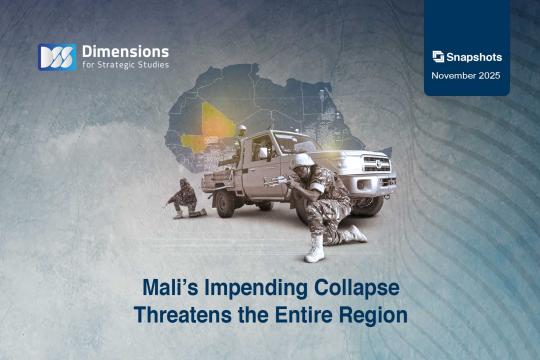
What Lies Behind Iran’s Worries in the Caucasus?
2024-09-264795 view
Despite the apparently strong ties between Russia and Iran, this relationship cannot be separated from its context or from the interests and interactions of the two powers. This applies both to their relationship in the Middle East and in the Caucasus region.
This was starkly demonstrated by Iran’s angry reaction to Russian statements after a visit by President Vladimir Putin to Azerbaijan to discuss the terms of a ceasefire agreement between Azerbaijan and Armenia after their 44-day war in 2020. The rift between Iran and Russia was widest when it concerned the opening of the Zangezur corridor, a trade route. Set to connect the mainland of Azerbaijan with its exclave of Nakhchivan, passing through the Armenian territory of Syunik which lies along the border with Iran.
Iran strongly opposed the move, and the Russian ambassador in Tehran was summoned to the Iranian Ministry of Foreign Affairs, an unusual move between the two allies. The Russian ambassador was informed of Iran’s objection to these statements and the need to considering the interests of all parties and their national sovereignty. This signaled an ongoing divergence in positions between Russia and Iran regarding regional arrangements in the South Caucasus. It also raised a key question: why does Iran object to the corridor, which doesn’t pass through its territory?
The answer to this question involves points that impact all countries in the region, especially Iran, which believes that the opening of the corridor will bring geopolitical changes to the entire Caucasus, shifting the balance of power in the region at Iran’s expense and constituting, for Iran, a red line that cannot be ignored.
On the one hand, from an Iranian perspective, opening the Zangezur corridor amounts to a change in the region’s internationally recognized borders, as it would reduce the number of countries bordering Iran from 15 to 14, following the loss of its shared border with Armenia. This will deprive Iran of an outlet to Europe, connecting it with Georgia through Armenia.
Additionally, the corridor would affect Iran’s strategic role in transporting Azerbaijani goods to the Nakhchivan region, as well as Azerbaijan’s exports to the region. Therefore, the opening of the corridor would reduce Iran's strategic importance as a transit route for goods between the Global North and the South, and it would lose one of its key leverage points in its competition with the Caucasus countries. For this reason, Iran firmly rejects any modifications to the maps and supply routes in the region.
On the other hand, Iran believes that cutting off its borders with Armenia will contribute to its complete encirclement in the Caucasus by Türkiye and Azerbaijan, both of which it sees as rivals. Many observers see this as one of Iran’s main concerns over any geopolitical changes on its borders, stemming from apprehension about a potential “Turkish world” linked via the Zangezur corridor.
The opening of the corridor would expand Türkiye’s regional presence in the area by connecting it by land to Central Asian and Caucasus countries with which it shares cultural and ethnic ties, including Azerbaijan, Kazakhstan, Uzbekistan, Kyrgyzstan, Turkmenistan, and even Eastern Turkestan (Xinjiang) in northwest China, which is home to a Turkic Uighur majority. This would give Ankara, Tehran’s strongest regional competitor, even more room for maneuver, allowing it to increase its activities in the region and enhance its regional role at the expense of that of Iran.
In this context, Tehran’s protest against Moscow’s stance makes clear to all those interested in opening the corridor, particularly Türkiye, that it would constitute a red line.
The opening of the corridor would allow Türkiye to revive its ambitions of the “Turkish Crescent” project, connecting Ankara with Central Asian countries, expanding the Council of Turkic-Speaking States, and circumscribing Iran’s role in the Eurasian region.
If the corridor is opened, this would represent a major strategic shift that would alter the political, security, and economic equations in the entire region at Iran’s expense.
This means the opening of the corridor is more than just a regional issue. Rather, it is part of a larger international game in which each power is trying to impose its vision to suit its strategic interests.
The near future could be decisive in determining the shape of alliances and the outlines of new balances in this sensitive region of the world. This makes Iran highly attuned to any change that may threaten its status and influence in this context—hence its rejection of the corridor.





